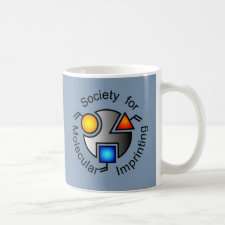
Authors: Ghasemi S, Nematollahzadeh A
Article Title: Molecularly imprinted ultrafiltration polysulfone membrane with specific nano-cavities for selective separation and enrichment of paclitaxel from plant extract.
Publication date: 2018
Journal: Reactive and Functional Polymers
Volume: 126
Page numbers: 9-19.
DOI: 10.1016/j.reactfunctpolym.2018.02.012
Alternative URL: https://www.sciencedirect.com/science/article/pii/S1381514817303176
Abstract: Molecular imprinting technology (MIT) was employed to fabricate polysulfone (PSf) membranes with specific nano-cavities for selective separation and enrichment of paclitaxel from a neat solution and also from yew tree extract. Polymer/template ratio, feed concentration, and the template extractor solvent were optimized. In accordance with the paclitaxel molecular dimension, the specific nano-cavities size was predicted to be 2.18 x 1.16 nm. The membranes were characterized in terms of pure water flux, molecular weight cut-off (MWCO), adsorption and diffusion, porosity, contact angle, and fouling. The results revealed that water flux through the molecularly imprinted membrane (MiM) is slightly less than that for the non-imprinted membrane (NiM), although the other properties relatively enhanced. For an in-depth understanding of the separation performance, the optimized membrane was analyzed by Attenuated total reflection Fourier-transform infrared spectroscopy (ATR-FTIR), scanning electron microscopy (SEM), and diffuse reflectance spectroscopy (DRS). ATR-FTIR spectra and SEM images showed no significant difference between the imprinted and non-imprinted membranes, while DRS spectra revealed a spatial orientation in the polymer chain. At the optimum condition (paclitaxel concentration in the dope solution = 0.5 wt%, feed initial concentration = 20 ppm, and ethanol/water ratio = 50:50 v/v) the MiM exhibited relatively high ability to recognize and separate paclitaxel with imprinting factor of 2.28. The reuse of the MiM up to 3 repeated cycles showed no obvious deterioration in the performance. Furthermore, in a single pass MiM could enrich paclitaxel from a crude yew tree extract, a real or complex solution, up to 48%, which could be quite encouraging from industrial and pharmaceutical points of view
Template and target information: paclitaxel
Author keywords: molecularly imprinted membrane, Paclitaxel, separation, Yew tree extract



Join the Society for Molecular Imprinting

New items RSS feed
Sign-up for e-mail updates:
Choose between receiving an occasional newsletter or more frequent e-mail alerts.
Click here to go to the sign-up page.
Is your name elemental or peptidic? Enter your name and find out by clicking either of the buttons below!
Other products you may like:
 MIPdatabase
MIPdatabase









